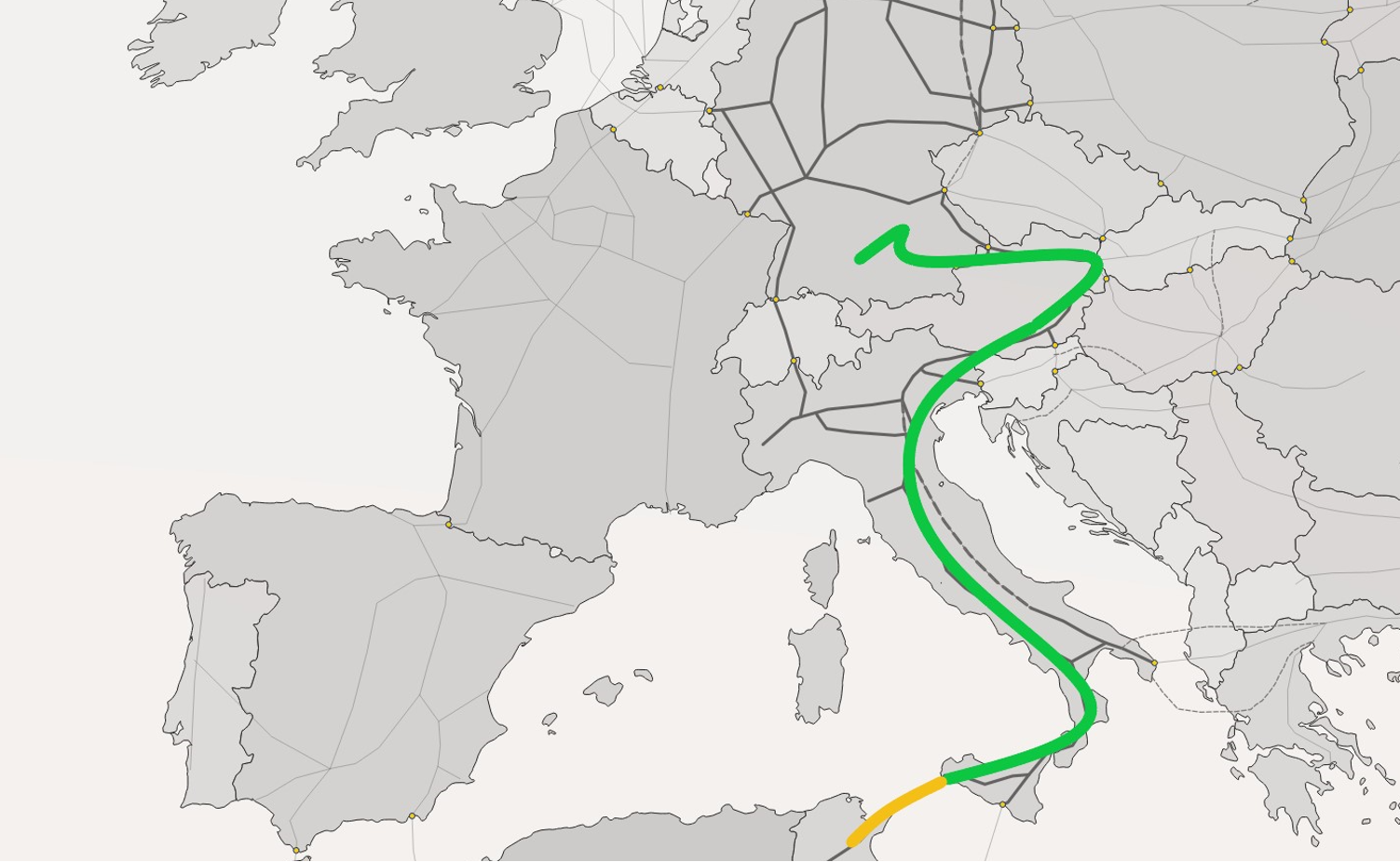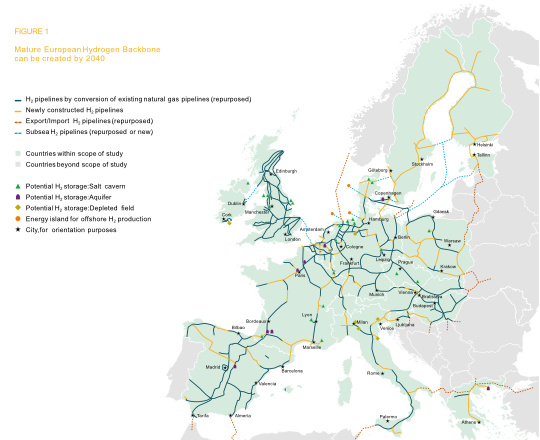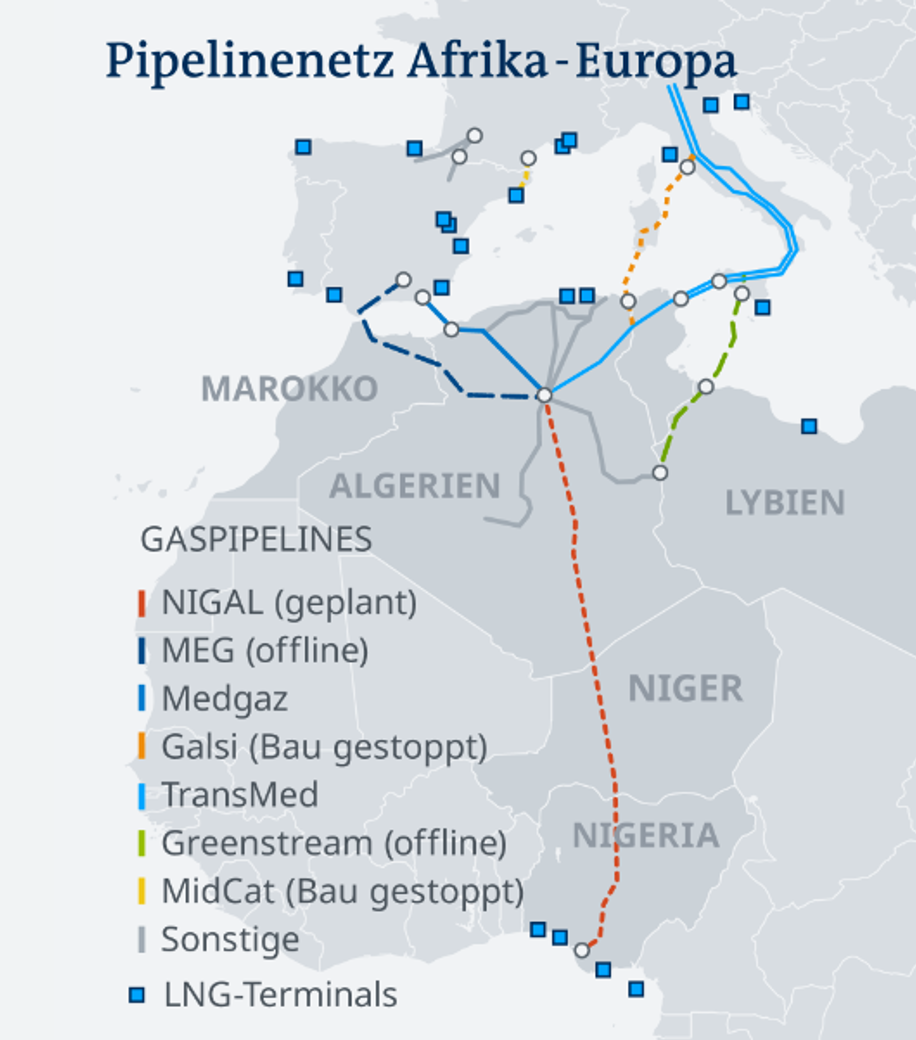Political institutional boost for the SoutH2 Corridor
Over the last few weeks of May, the Austrian, German and Italian authorities signed a joint letter supporting the SoutH2 Corridor, or Southern Hydrogen Corridor, which plans to link the transport of hydrogen in the European Union from North Africa, more specifically Algeria, to the heart of Europe through Italy (south to north).
The Ministries of Energy of Austria, Germany and Italy endorsed the initiative by signing a joint letter of support for the development of the SoutH2 Corridor in the European Union. The infrastructure projects associated with this corridor’s development will be aimed at obtaining Project of Common Interest (PCI) status within the European Union.
The HNOs (hydrogen network operators) participating in the SoutH2 Corridor are the following:
- FNB Gas and Bayernet GmbH in Germany.
- Snam Rete Gas in Italy.
- The Austrian companies Trans-Austria Gasleitung (TAG) and Gas Connect Austria (GCA).
The SoutH2 Corridor will be 3,300 km long and connect North Africa, Italy, Austria and Germany, supplying the main Central European industrial groups with renewable hydrogen. This hydrogen will be highly competitive from an economic point of view due to the abundance of renewable sources at origin and will be able to cover more than 40% of the REPowerEU’s import targets for renewable hydrogen. The annual import capacity of the facility is estimated at over 4 Mtpa per year.
This initiative focuses on using the existing natural gas transport infrastructure which will be reused for the transport of hydrogen, also including some new hydrogen pipelines newly built. The high utilisation rate of the existing pipelines (more than 70%) will allow a very cost-effective transport and will also ensure a secure supply to places where the decarbonisation of industry makes it very difficult to avoid emissions that are hard to reduce.
The SoutH2 corridor, which is expected to be fully operational after 2030, comprises the following individual projects of common interest (PCI):
- Italian H2 Backbone H2 by Snam Rete Gas.
- H2 Readiness of the TAG pipeline system by the Trans Austria Gasleitung GmbH.
- H2 Backbone WAG + Penta-West by Gas Connect Austria GmbH.
- HyPipe Bavaria – The Hydrogen Hub by Bayernet GmbH.
Within December 2022, each operator submitted the respective individual applications for projects of common interest (PCI) under the TEN-E Regulation to the European Commission. All these projects are considered strategic investments at a national level in Italy, Austria and Germany and can be carried out with existing transport infrastructure, but there is also a strong requirement for public support from both national and European institutions.

Image 1 – www.south2corridor.net
The development of the SoutH2 Corridor, which is part of the European Hydrogen Backbone, will ensure the security of H2 supply in Europe and it is crucial for the development of an interconnected and diversified hydrogen distribution network over the continent. The renewable hydrogen would mainly be produced in North Africa, to which the partners have collected signed letters of support from companies involved in local production aiming to produce around 4 Mtpa of renewable hydrogen on African territory. It would then flow to the North, supplying the hard-to-decarbonise industrial demand poles in Italy (Augusta, Taranto and Northern Italy), Austria (e.g., Styria, Vienna and Linz) and Germany (Burghausen and Ingolstadt). It would also facilitate the transport of domestic renewable hydrogen production in each of the member states via the SoutH2 Corridor. Moreover, the fulfilment of the SoutH2 Corridor plays a key role for the establishment of supply security via storage facilities along the route.

Benefits of the SoutH2 Corridor
For the planned renewable H2 transport facility, the following advantages can be identified:
- Significant renewable hydrogen transport capacity with the ability to use mainly the existing infrastructure.
- Re-used pipelines are the most efficient, competitive and sustainable transport means.
- Provides Central Europe a significant amount of affordable energy through the transport of very low-cost renewable hydrogen with a high potential.
- Serves Central Europe’s largest hydrogen demand groups (refineries, petrochemical industry, etc.).
- Allows CO2 savings in all countries throughout the entire route.
- Significant support for achieving European and national climate targets.
- Promotes supply security of hydrogen via connections to storages along the whole route.
- Diversifies energy import routes in Europe.
Renewable hydrogen from Algeria
Algeria has become Italy’s most important gas supplier and a strategic energy partner for the country. The Algerian-Italian energy bridge will be of considerable importance to Germany, Austria and Switzerland. There is already an Algeria-Sicily pipeline, which has doubled natural gas deliveries to Italy this year to over 20 billion m3.
Sonatrach, in consortium with the Italian government and ENI, plans to promote the development of a hydroduct running parallel to the existing pipeline, through which renewable hydrogen produced with the vast amounts of energy from Algeria’s huge solar plants in the Sahara will flow. The Italian government does not dismiss future cooperation with Egypt and Mozambique for future hydrogen connections with Europe.

Conclusions
Structuring a renewable hydrogen distribution network in Europe, based on the European Hydrogen Backbone, seems key to the development of the hydrogen industry in the European Union. At the source of this renewable hydrogen is where the current geopolitical battle between the EU member states and the North African producer countries takes place. The close relationship between Meloni’s Italian government and Algeria, combined with recent agreements signed by Austria and Germany, allow an infrastructure such as the SoutH2 Corridor to take advantage over the Morocco-Spain-France axis as the main route for the supply of renewable hydrogen by pipeline to the heart of Europe. Moreover, 70% of the existing network will be used.
The lack of definition in the relations between Morocco and Spain, along with the difficulties and reluctance of the French government (H2Med) to future hydrogen products passing through its territory as well as the possible classification of “atomic” hydrogen as 100% renewable hydrogen, seem to be barriers that will hinder the development of an exclusive hydrogen transport infrastructure which would link the north of Morocco with Europe, a key infrastructure for the Spanish hydrogen industry.
Here at SynerHy’s blog, we will keep you informed of all advances in renewable hydrogen pipeline distribution infrastructures in Europe.
SynerHy, powering net zero!